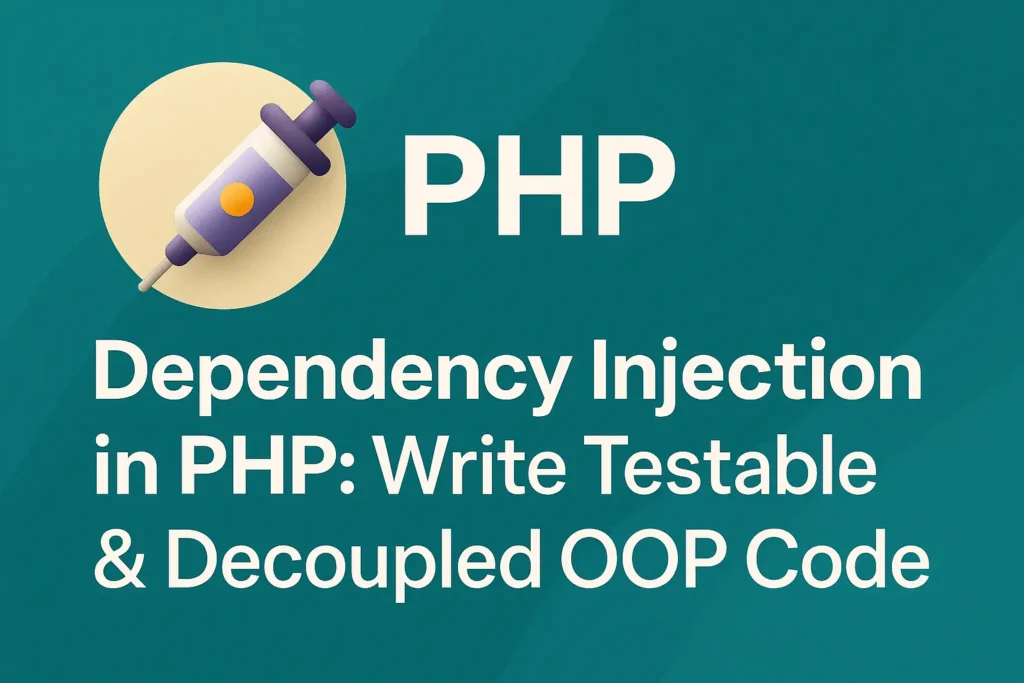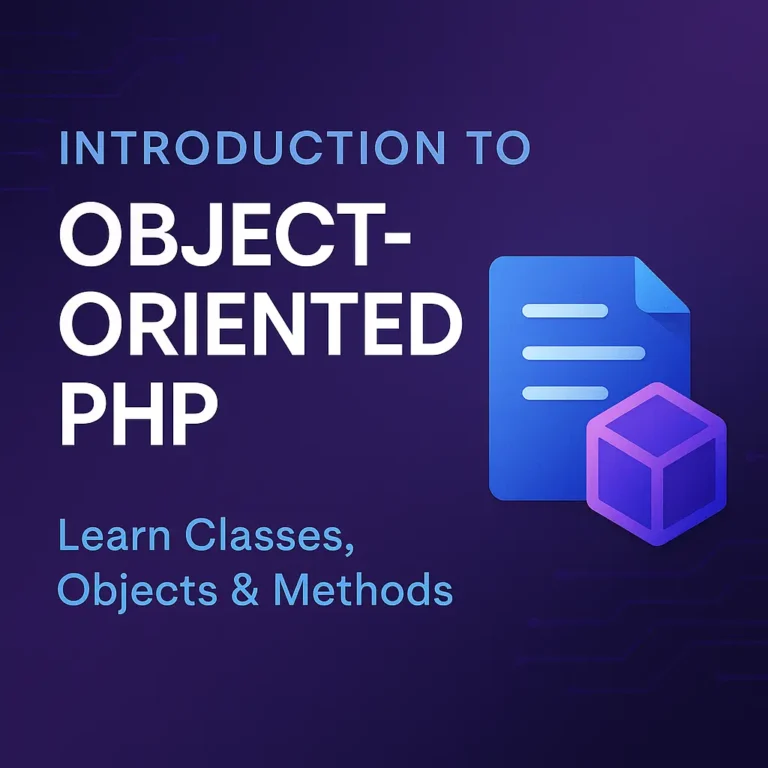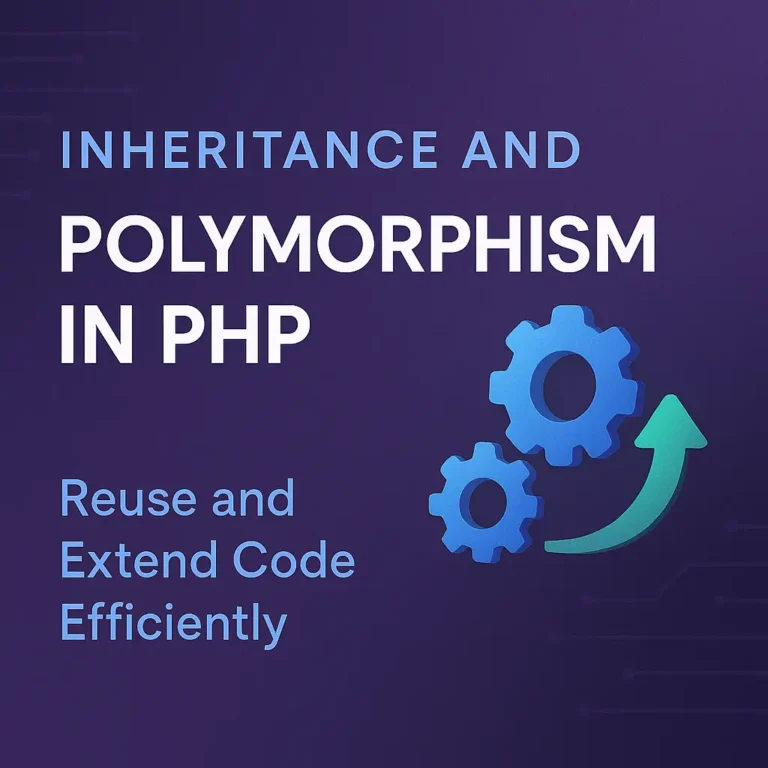In this article, we will explore what Dependency Injection is, its benefits, and how to implement it in PHP with practical examples.
What is Dependency Injection?
Definition
Dependency Injection is a technique where an object receives other objects that it depends on, known as dependencies. Rather than the object creating these dependencies itself, they are injected into the object externally. This can be done through various methods such as constructor injection, setter injection, or interface injection.
Benefits of Dependency Injection
Decoupling: Reduces the dependency between classes, making the code more modular and easier to maintain.
Testability: Simplifies unit testing by allowing the injection of mock dependencies.
Flexibility: Enhances the ability to change dependencies without modifying the dependent class.
Reusability: Promotes code reuse by allowing the same class to work with different dependencies.
Types of Dependency Injection
Constructor Injection: Dependencies are provided through a class constructor.
Setter Injection: Dependencies are provided through setter methods.
Interface Injection: Dependencies are provided through methods defined in an interface that the class implements.
Implementing Dependency Injection in PHP
Constructor Injection
Constructor injection is the most common and straightforward method of dependency injection. Dependencies are passed to the class through its constructor.
Example: Constructor Injection
class Logger {
public function log($message) {
echo "Logging message: $message\n";
}
}
class UserService {
private $logger;
public function __construct(Logger $logger) {
$this->logger = $logger;
}
public function registerUser($username) {
// Registration logic
$this->logger->log("User $username registered.");
}
}
// Usage
$logger = new Logger();
$userService = new UserService($logger);
$userService->registerUser('JohnDoe');
In this example, the UserService class depends on the Logger class. The Logger instance is injected into the UserService through its constructor.
Setter Injection
Setter injection involves providing dependencies through setter methods. This allows for the dependencies to be set or changed after the object has been created.
Example: Setter Injection
class Logger {
public function log($message) {
echo "Logging message: $message\n";
}
}
class UserService {
private $logger;
public function setLogger(Logger $logger) {
$this->logger = $logger;
}
public function registerUser($username) {
// Registration logic
$this->logger->log("User $username registered.");
}
}
// Usage
$logger = new Logger();
$userService = new UserService();
$userService->setLogger($logger);
$userService->registerUser('JohnDoe');
In this example, the Logger instance is injected into the UserService using a setter method setLogger.
Interface Injection
Interface injection involves injecting dependencies through methods defined in an interface that the class implements. This is less common in PHP but can be useful in certain scenarios.
Example: Interface Injection
interface LoggerInterface {
public function log($message);
}
class Logger implements LoggerInterface {
public function log($message) {
echo "Logging message: $message\n";
}
}
interface UserServiceInterface {
public function setLogger(LoggerInterface $logger);
}
class UserService implements UserServiceInterface {
private $logger;
public function setLogger(LoggerInterface $logger) {
$this->logger = $logger;
}
public function registerUser($username) {
// Registration logic
$this->logger->log("User $username registered.");
}
}
// Usage
$logger = new Logger();
$userService = new UserService();
$userService->setLogger($logger);
$userService->registerUser('JohnDoe');
In this example, LoggerInterface and UserServiceInterface define the methods for setting dependencies, which are implemented by the Logger and UserService classes, respectively.
Dependency Injection Containers
A Dependency Injection Container (DIC) is a tool that helps manage dependencies in a more structured way. It allows you to define and resolve dependencies automatically.
Example: Simple Dependency Injection Container
Here is a simple implementation of a Dependency Injection Container in PHP:
class Container {
private $bindings = [];
public function set($name, $resolver) {
$this->bindings[$name] = $resolver;
}
public function get($name) {
if (isset($this->bindings[$name])) {
return call_user_func($this->bindings[$name]);
}
throw new Exception("Service not found: " . $name);
}
}
// Define services
$container = new Container();
$container->set('logger', function() {
return new Logger();
});
$container->set('userService', function() use ($container) {
return new UserService($container->get('logger'));
});
// Usage
$userService = $container->get('userService');
$userService->registerUser('JohnDoe');
In this example, the Container class allows you to define and resolve dependencies. The userService is resolved with its dependency logger automatically injected.
Using a DI Container Library
There are several libraries available for Dependency Injection in PHP, such as PHP-DI and Symfony’s DependencyInjection component. Here’s an example using PHP-DI:
Install PHP-DI: You can install PHP-DI using Composer:
composer require php-di/php-di
Define Dependencies and Usage:
use DI\ContainerBuilder;
class Logger {
public function log($message) {
echo "Logging message: $message\n";
}
}
class UserService {
private $logger;
public function __construct(Logger $logger) {
$this->logger = $logger;
}
public function registerUser($username) {
// Registration logic
$this->logger->log("User $username registered.");
}
}
// Set up container
$containerBuilder = new ContainerBuilder();
$containerBuilder->addDefinitions([
Logger::class => \DI\create(Logger::class),
UserService::class => \DI\create(UserService::class)
->constructor(\DI\get(Logger::class)),
]);
$container = $containerBuilder->build();
// Usage
$userService = $container->get(UserService::class);
$userService->registerUser('JohnDoe');
In this example, PHP-DI is used to define and manage the dependencies of UserService and Logger. The container automatically resolves the dependencies when creating an instance of UserService.
Conclusion
Dependency Injection is a powerful design pattern that enhances the flexibility, scalability, and testability of your code. By decoupling the creation of dependencies from the behavior of classes, you can create more modular and maintainable applications. In PHP, you can implement Dependency Injection through constructor injection, setter injection, and interface injection. Additionally, using a Dependency Injection Container can simplify the management of dependencies in larger applications.
Whether you choose to implement your own container or leverage a library like PHP-DI, adopting Dependency Injection will significantly improve the quality and maintainability of your codebase.






